Abstract
1. The injection of 2-deoxy-D-glucose directly into the lateral hypothalamic area of rats, but not elsewhere, caused a prompt and sustained secretion of acid by the stomach at a rate comparable to that due to insulin hypoglycaemia.
2. Acid secretion provoked by such injections, like that resulting from hypoglycaemia, could be stopped by raising the plasma glucose concentration by the intravenous infusion of glucose.
3. Unilateral intrahypothalamic injection of 2-deoxy-D-glucose activated both vagi for, although cutting one vagus reduced the secretion, division of both was necessary to abolish it.
4. Gastric acid secretion evoked by a systemic stimulus (insulin-induced hypoglycaemia or intravenous 3-O-methylglucose) could be prevented by inactivating the lateral hypothalamic area on each side with phenol or lignocaine.
5. It is concluded that there exists in the lateral hypothalamic area a chemoreceptor, responsive to a lack of metabolizable glucose, which can initiate and sustain the vagally mediated secretion of acid by the stomach.
Full text
PDF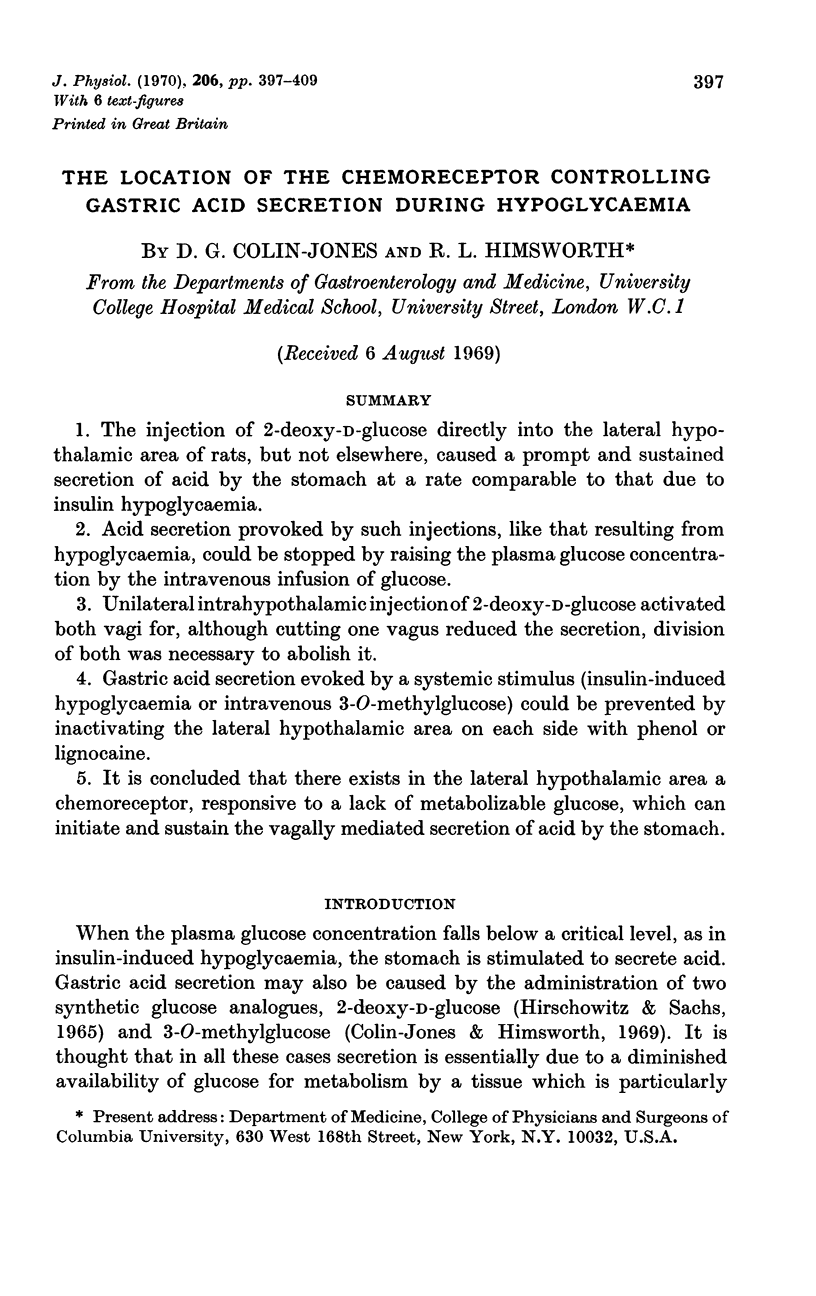
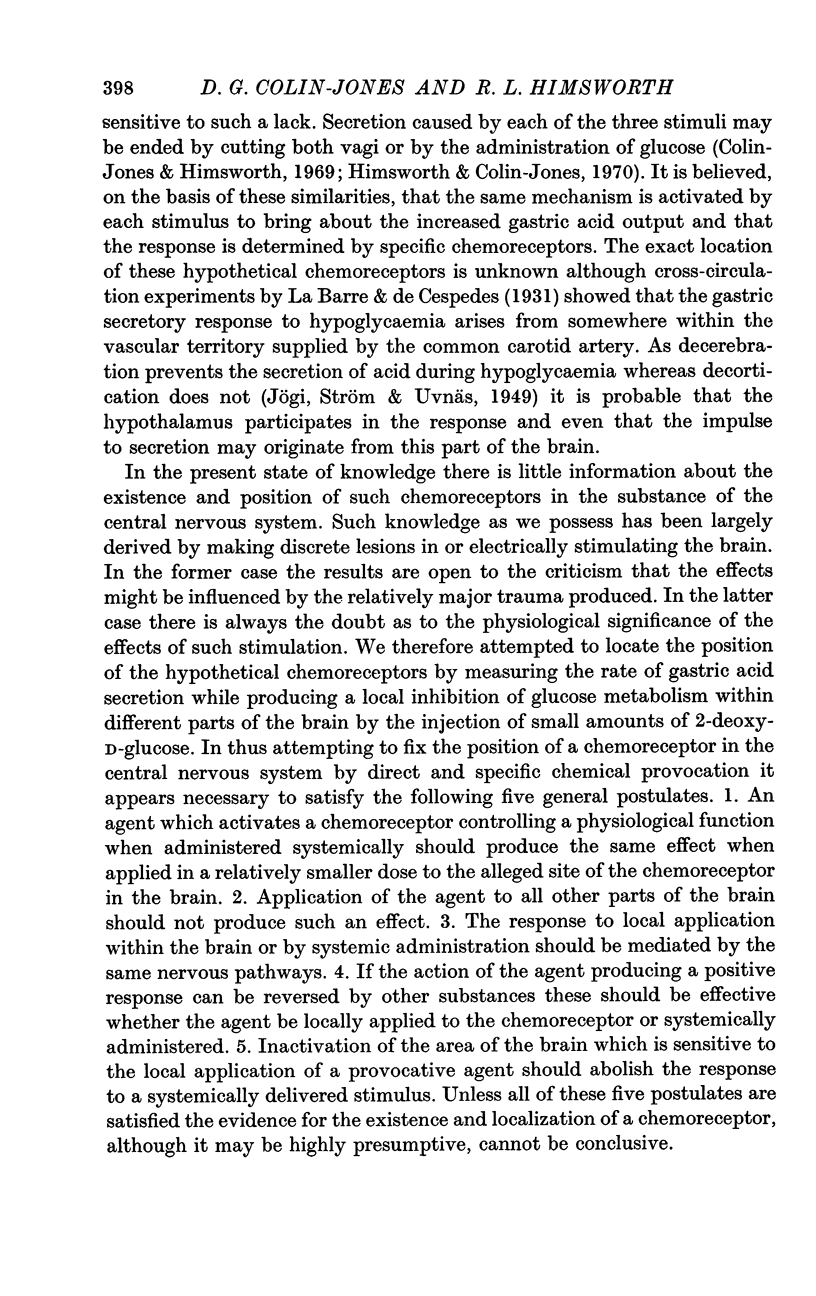
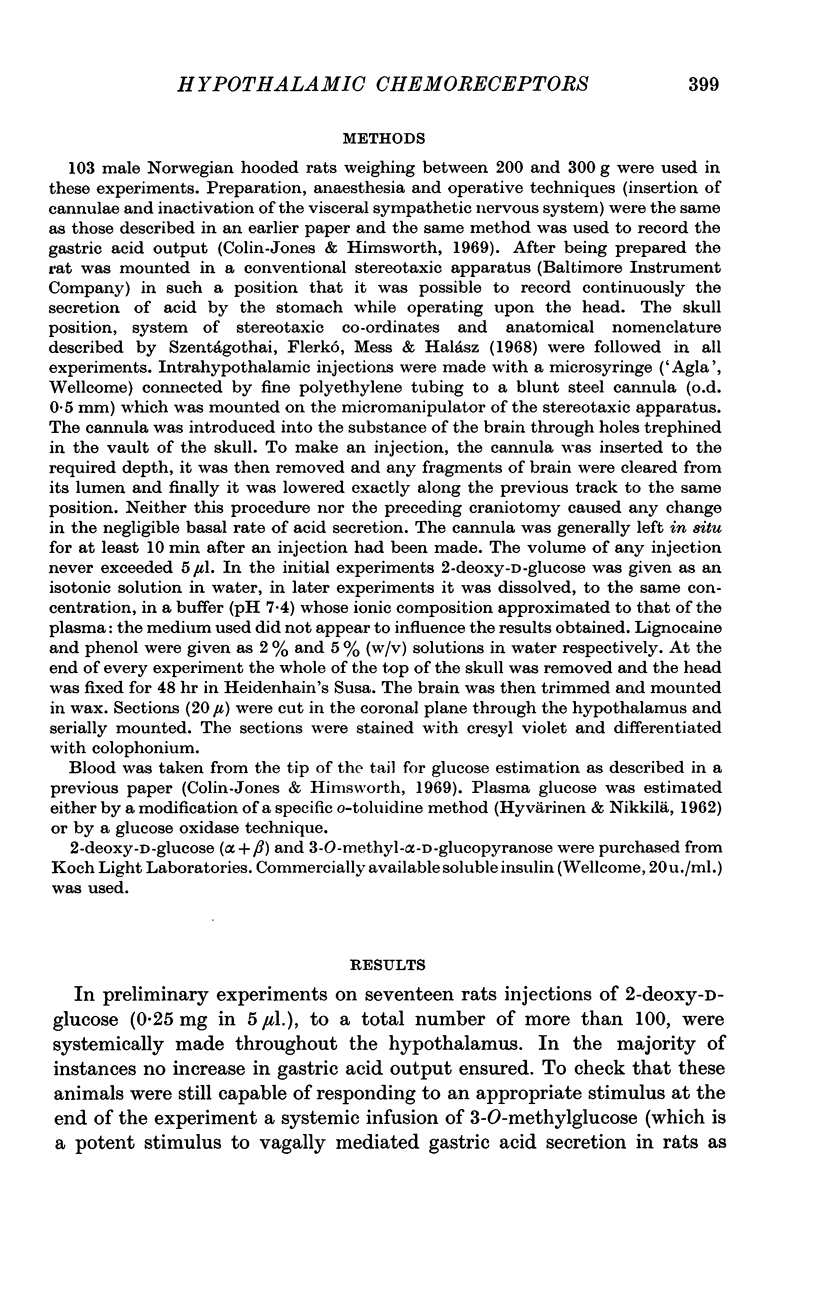
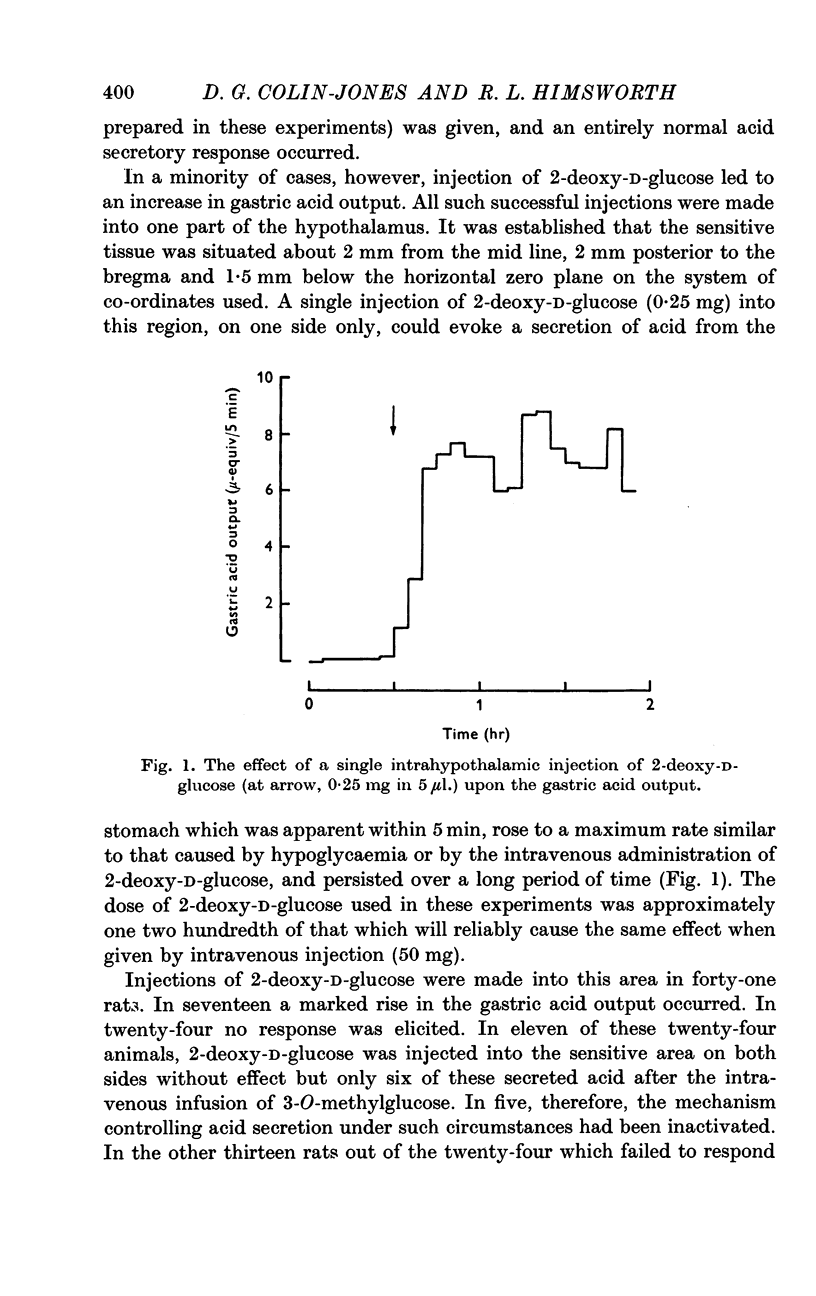
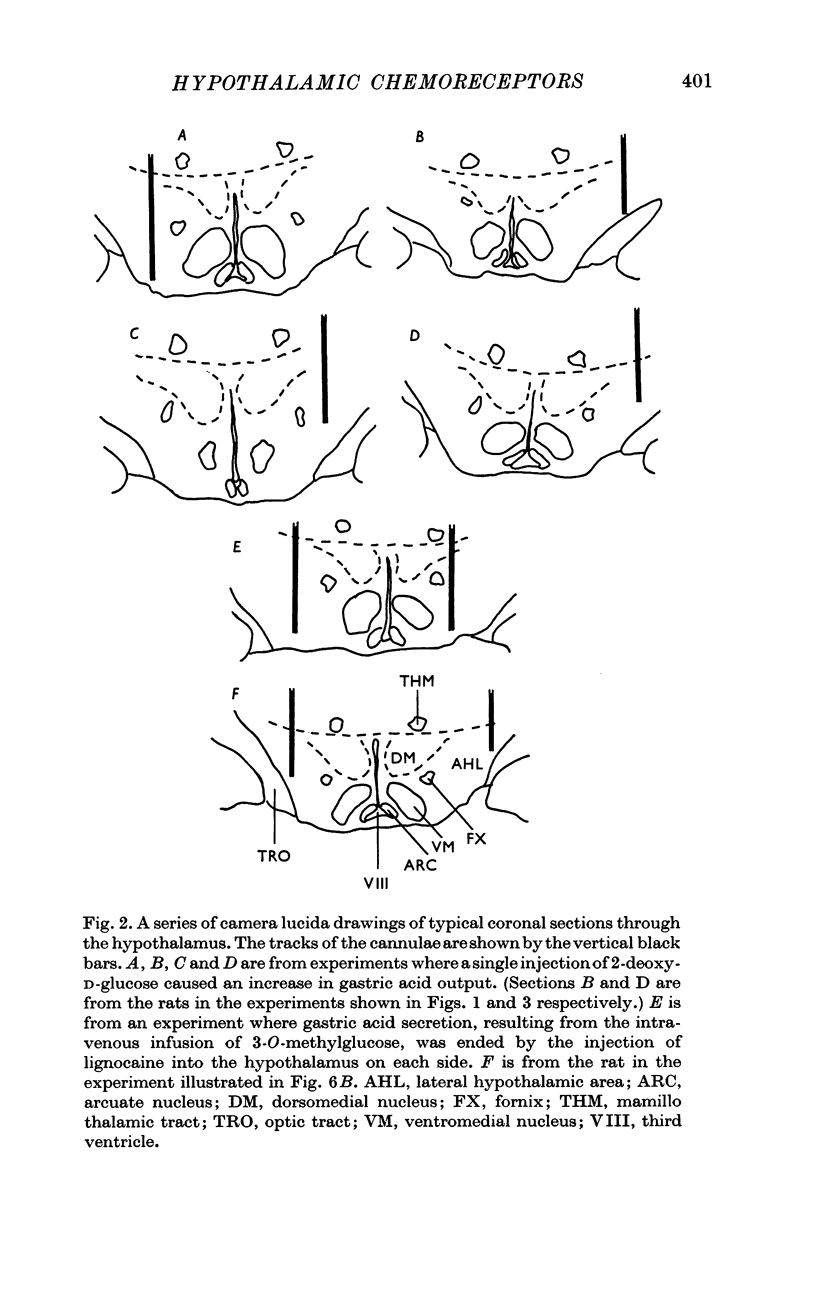
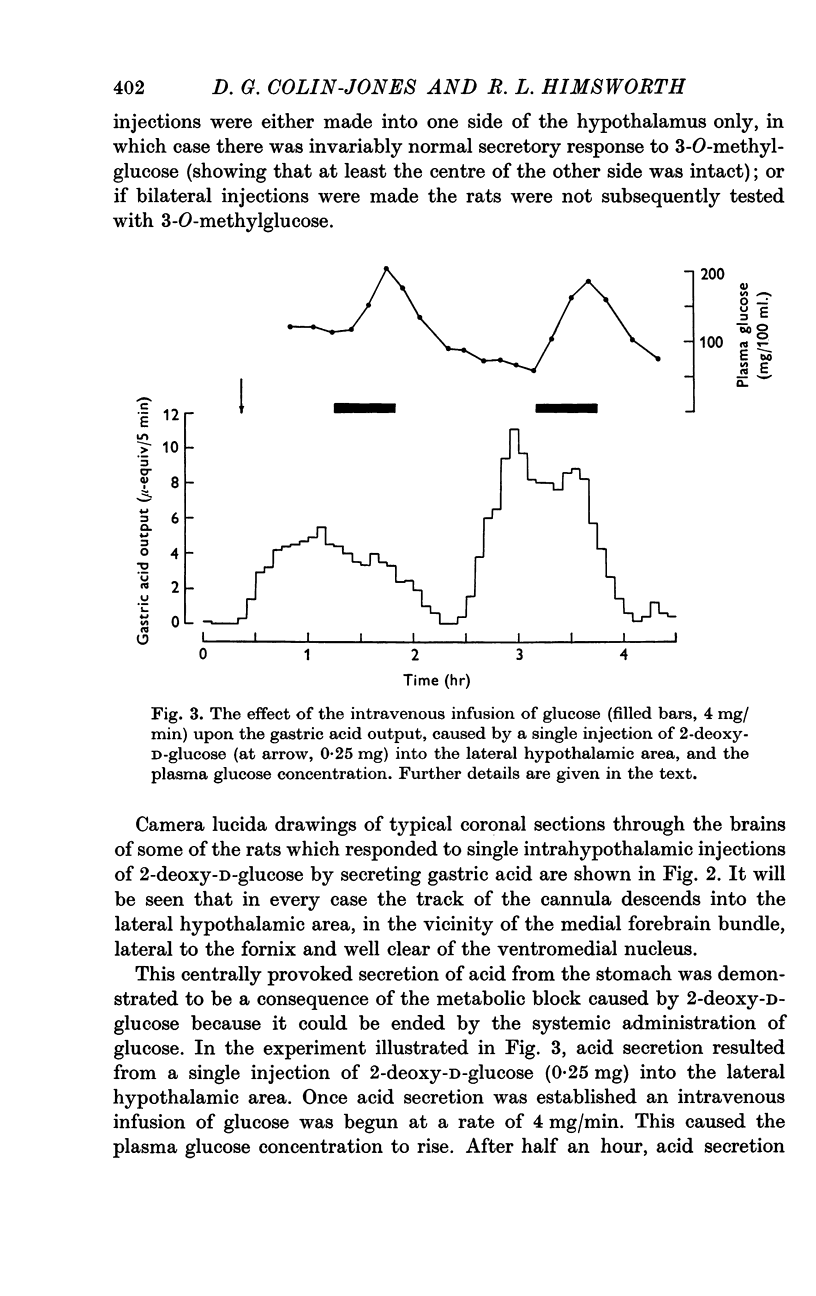
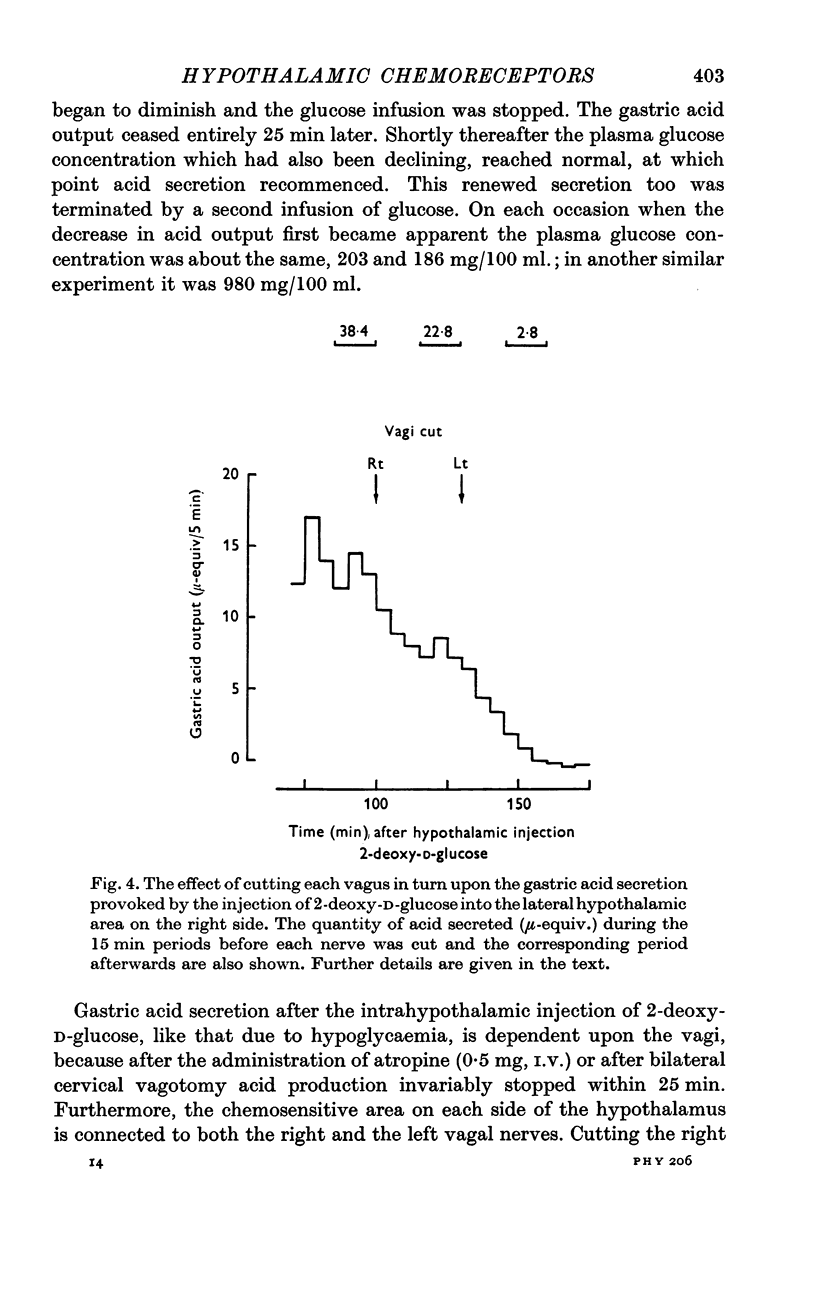
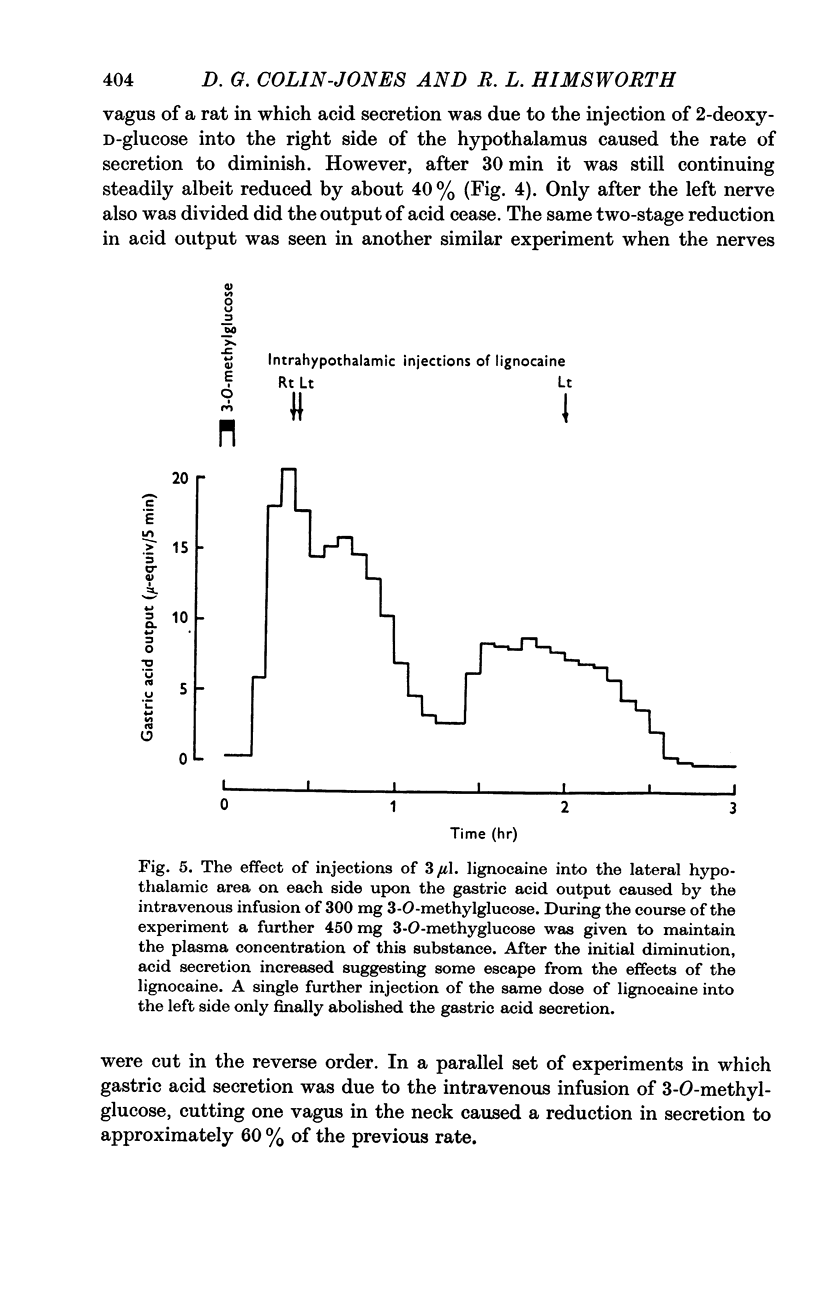

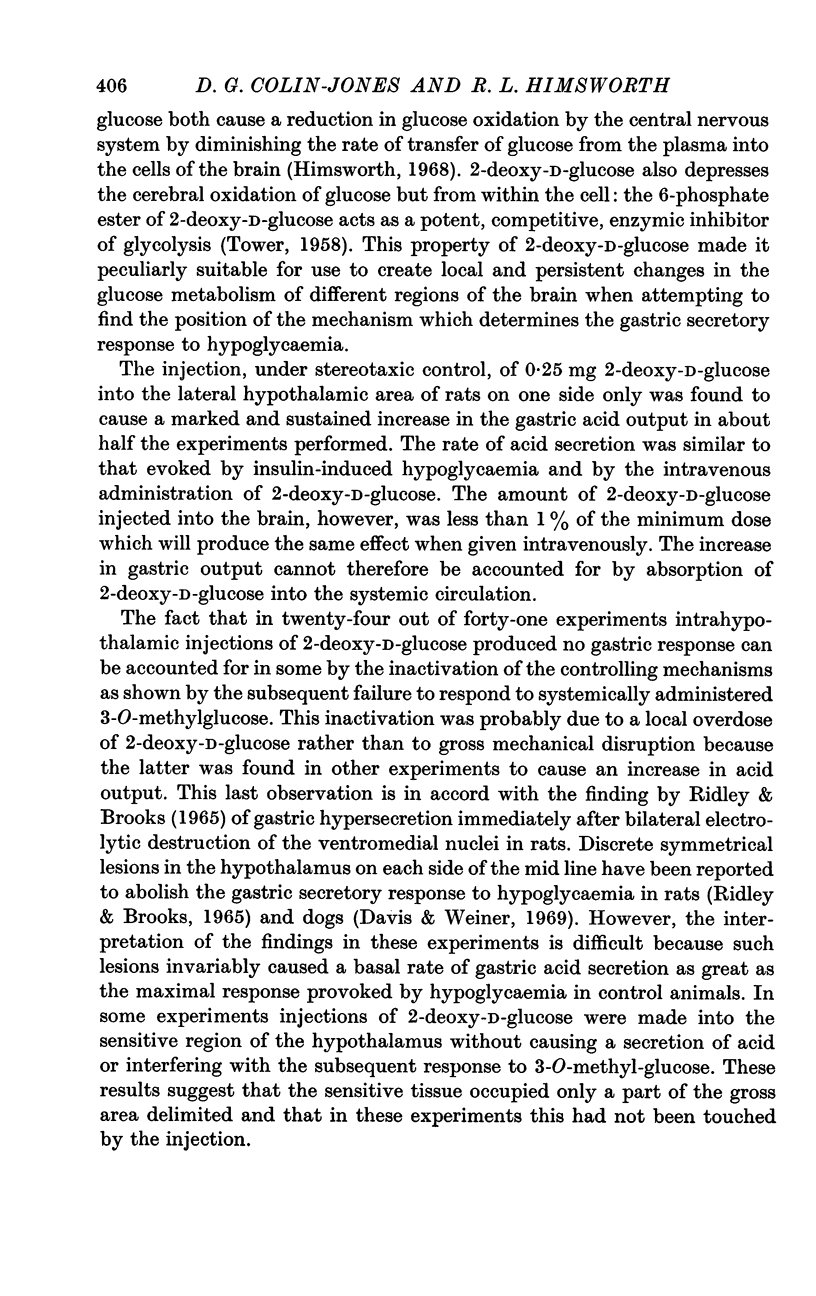
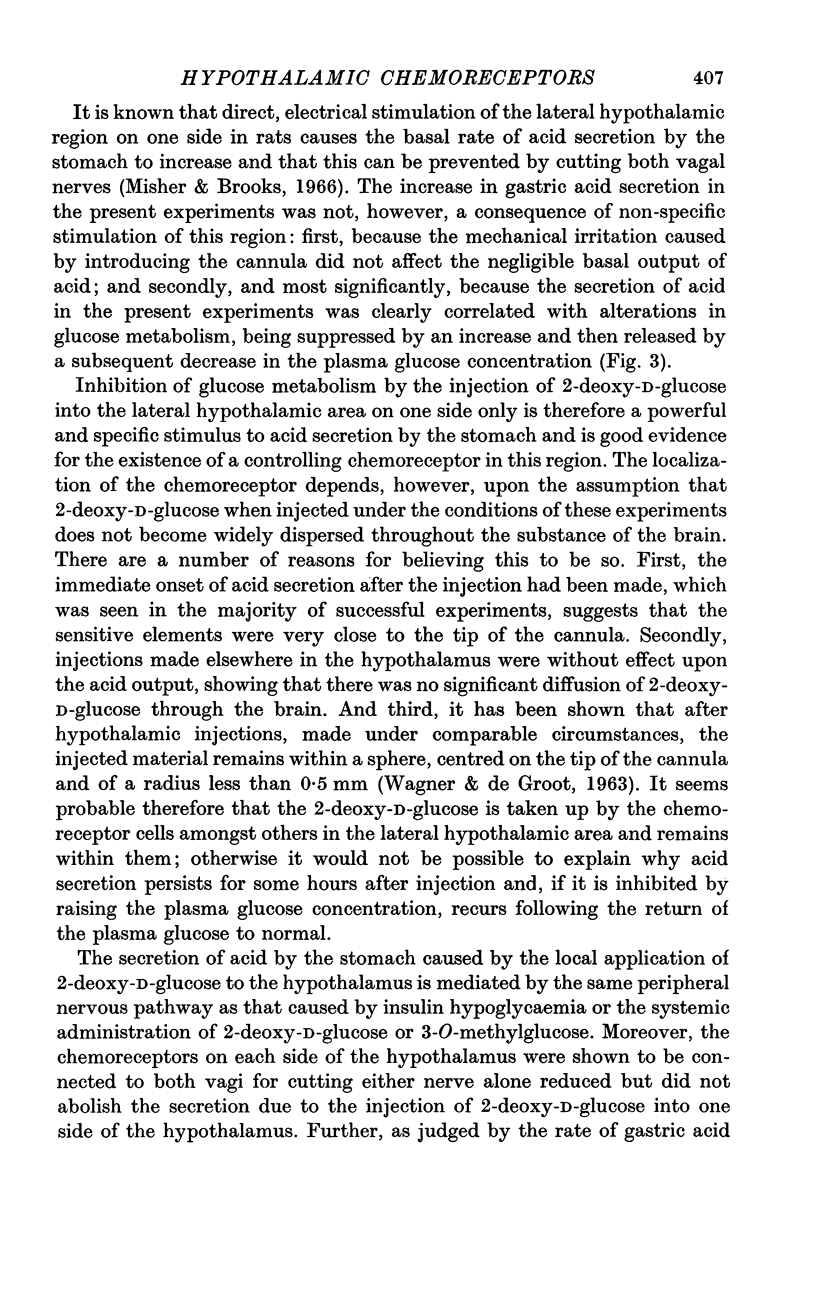
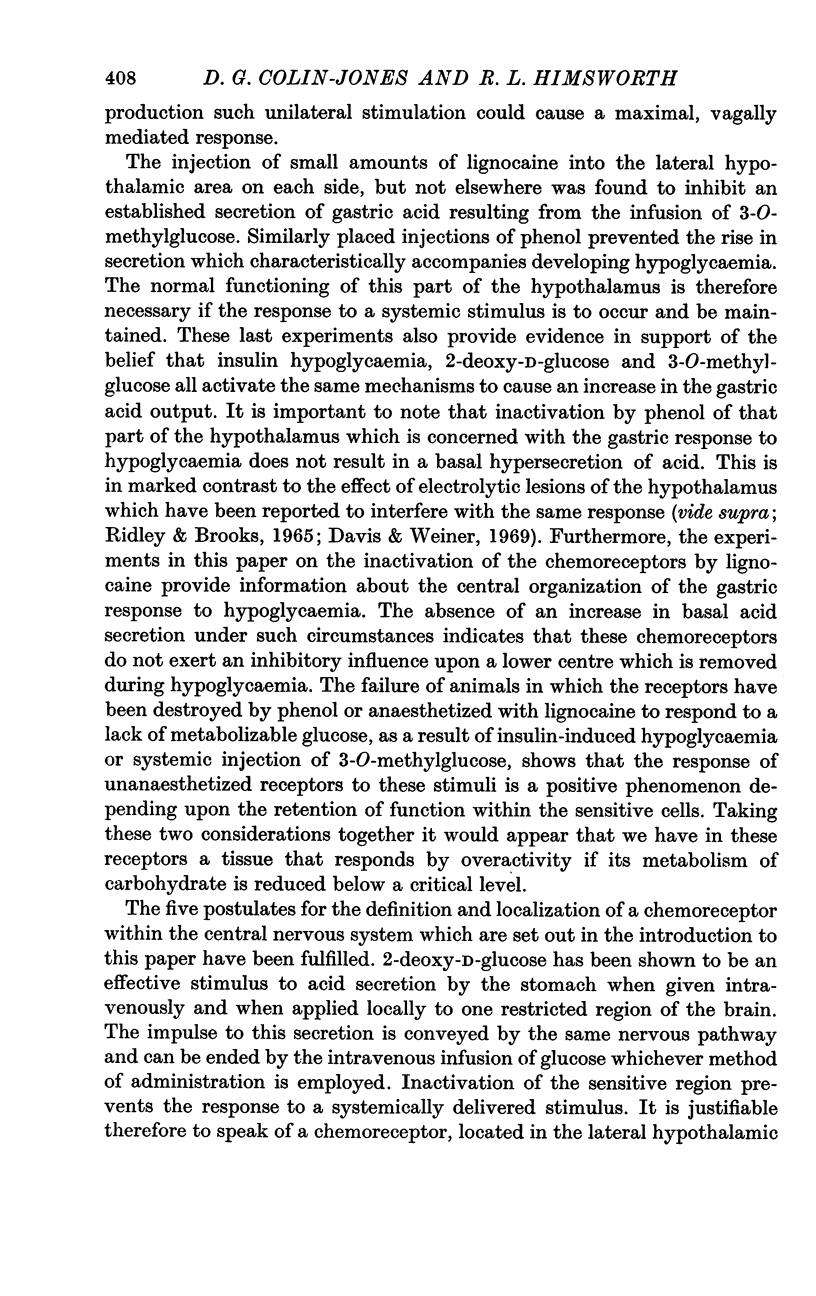
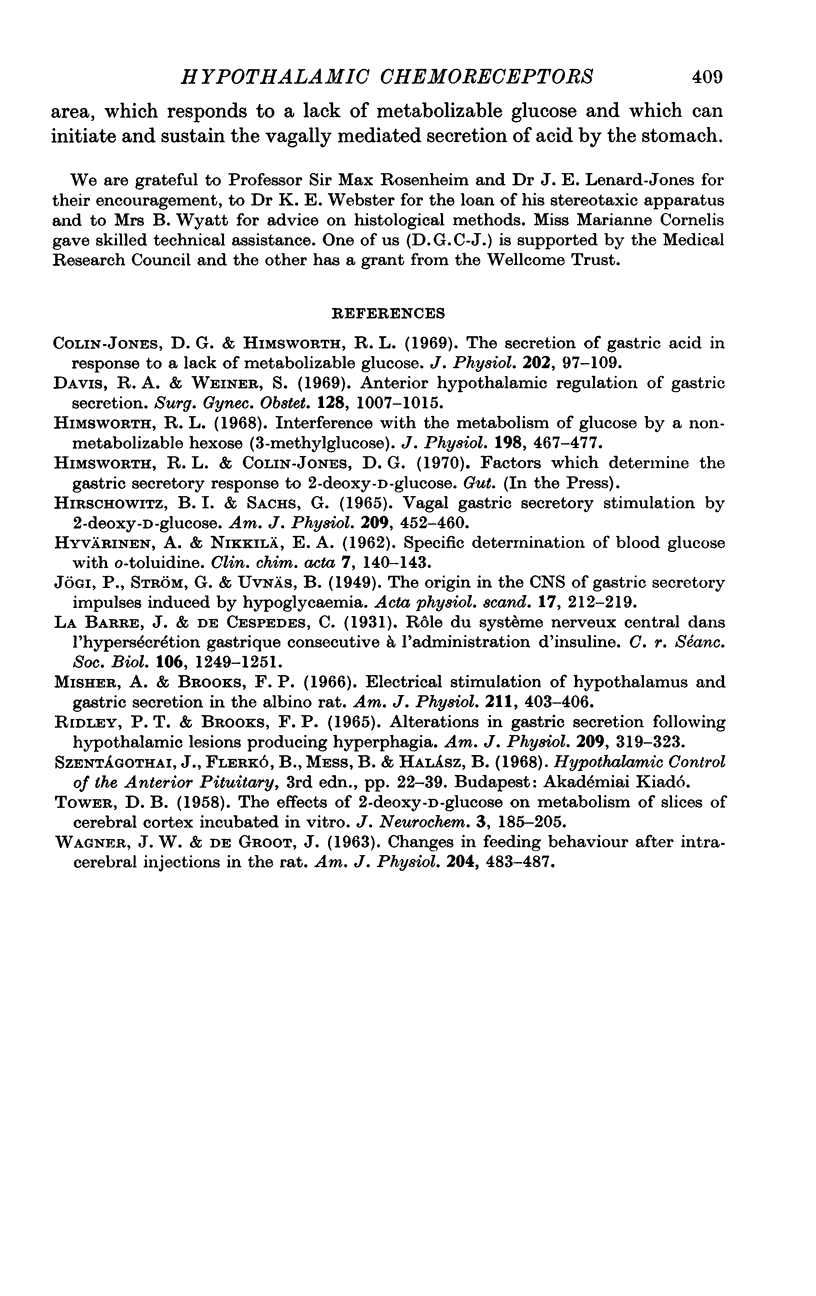
Selected References
These references are in PubMed. This may not be the complete list of references from this article.
- Colin-Jones D. G., Himsworth R. L. The secretion of gastric acid in response to a lack of metabolizable glucose. J Physiol. 1969 May;202(1):97–109. doi: 10.1113/jphysiol.1969.sp008797. [DOI] [PMC free article] [PubMed] [Google Scholar]
- Davis R. A., Weiner S. Anterior hypothalamic regulation of gastric secretion. Surg Gynecol Obstet. 1969 May;128(5):1007–1015. [PubMed] [Google Scholar]
- HYVARINEN A., NIKKILA E. A. Specific determination of blood glucose with o-toluidine. Clin Chim Acta. 1962 Jan;7:140–143. doi: 10.1016/0009-8981(62)90133-x. [DOI] [PubMed] [Google Scholar]
- Himsworth R. L. Interference with the metabolism of glucose by a non-metabolizable hexose (3-methylglucose). J Physiol. 1968 Sep;198(2):467–477. doi: 10.1113/jphysiol.1968.sp008617. [DOI] [PMC free article] [PubMed] [Google Scholar]
- Hirschowitz B. I., Sachs G. Vagal gastric secretory stimulation by 2-deoxy-D-glucose. Am J Physiol. 1965 Sep;209(3):452–460. doi: 10.1152/ajplegacy.1965.209.3.452. [DOI] [PubMed] [Google Scholar]
- Misher A., Brooks F. P. Electrical stimulation of hypothalamus and gastric secretion in the albino rat. Am J Physiol. 1966 Aug;211(2):403–406. doi: 10.1152/ajplegacy.1966.211.2.403. [DOI] [PubMed] [Google Scholar]
- RIDLEY P. T., BROOKS F. P. ALTERATIONS IN GASTRIC SECRETION FOLLOWING HYPOTHALAMIC LESIONS PRODUCING HYPERPHAGIA. Am J Physiol. 1965 Aug;209:319–323. doi: 10.1152/ajplegacy.1965.209.2.319. [DOI] [PubMed] [Google Scholar]
- TOWER D. B. The effects of 2-deoxy-D-glucose on metabolism of slices of cerebral cortex incubated in vitro. J Neurochem. 1958 Dec;3(2):185–205. doi: 10.1111/j.1471-4159.1958.tb12625.x. [DOI] [PubMed] [Google Scholar]
- WAGNER J. W., DE GROOT J. Changes in feeding behavior after intracerebral injections in the rat. Am J Physiol. 1963 Mar;204:483–487. doi: 10.1152/ajplegacy.1963.204.3.483. [DOI] [PubMed] [Google Scholar]


